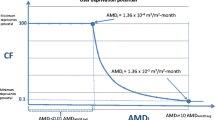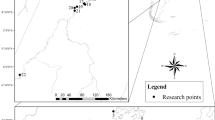Abstract
Today, one of the most important issues in the field of common water resources management is the allocation of water resources to different stakeholders with different interests. Game theory and conflict resolution methods, taking into account the interests and strategies of the players, provide efficient methods for allocating reservoirs water resources to stakeholders. In this research, for the first time, a wide range of different methods of game theory are used in order to allocate the water resources of Idoghmosh Dam reservoir (East Azarbaijan—Iran) to the agricultural and environmental stakeholders in the downstream. For this purpose, the NASH and four methods of bankruptcy theory, including PRO, AP, CEA, and CEL are used in this research. Also, in this research, the dam component is considered as a player. In the presented model for the optimal allocation of water to consumers, for the first time, the combination of game theory and the MPA as main innovation of this study is used, and the results obtained from it are compared with the GA. The proposed model is used in the base period (1987–2000) and the 14-year climate change period (2026–2039). In the following, for the first time, a wide range of different efficiency indexes of reliability, resiliency, vulnerability, flexibility, availability, supply to demand, volume reliability and SSD are used to analyze the reservoir operation policies. The results show that for each agricultural and environmental player in different base and future periods, the performance of different game theory methods on different indexes has been different. For example, the results for the agricultural player in the future period show that MPA with PRO method and then AP provided the best results for the indexes of vulnerability, resiliency, reliability, SSD, and supply to demand, that the similar values provided using GA and other bankruptcy methods have assigned lower values than MPA.











Similar content being viewed by others
Availability of Data and Materials
Those will be made available on reasonable request.
Abbreviations
- NASH:
-
Nash Conflict Resolution Model
- PRO:
-
Proportional
- AP:
-
Adjusted Proportional
- CEA:
-
Constrained Equal Award
- CEL:
-
Constrained Equal Loss
- MPA:
-
Marine Predators Algorithm
- GA:
-
Genetic Algorithm
- SSD :
-
Sum of Squared Deficits
- CWAM:
-
Collaborative Water Allocation Model
- NSGA-II :
-
Non-Dominated Sorting Genetic Algorithm
- RSBT:
-
Rubinstein Sequential Bargaining Theory
- ESE:
-
Evolutionary Stable Equilibrium
- HGT-MPM:
-
Hybrid Game Theory and Mathematical Programming Model
- GMCR:
-
Graph Model Conflict Resolution
- WEAP:
-
Water Evaluation and Planning
- AHP:
-
Analytical Hierarchy Process
- FADs:
-
Fish Aggregating Devices
References
American Society of Civil Engineers (ASCE) (1998) Sustainability criteria for water resources systems. Task Committee on Sustainability Criteria, Water Resources Planning and Management Division, ASCE and Working Group, UNESCO/IHP IV Project M-4.3. Reston, VA, USA
Ansink E (2009) Game-theoretic models of water allocation in transboundary river basins, Wageningen University
Ashofteh P-S, Bozorg-Haddad O, Mariño MA (2013a) Climate change impact on reservoir performance indexes in agricultural water supply. J Irrig Drain Eng 139(2):85–97
Ashofteh P-S, Bozorg-Haddad O, Mariño MA (2013b) Scenario assessment of streamflow simulation and its transition probability in future periods under climate change. Water Resour Manage 27(1):255–274
Aumann RJ, Maschler M (1985) Game theoretic analysis of a bankruptcy problem from the Talmud. J Econ Theory 36(2):195–213
Azadi F, Ashofteh PS, Shokri A, Loáiciga HA (2021) “Simulation-optimization of reservoir water quality under climate change.” J Water Res Plan Manag 147(9). https://doi.org/10.1061/%28ASCE%29WR.1943-5452.0001436
Curiel IJ, Maschler M, Tijs SH (1987) Bankruptcy games. Z Oper Res 31(5):A143–A159
Faramarzi A, Heidarinejad M, Mirjalili S, Gandomi AH (2020) “Marine predators algorithm: A nature-inspired metaheuristic.” Expert Syst Appl 152:113377
Ganji A, Khalili D, Karamouz M (2007) Development of stochastic dynamic nash game model for reservoir operation. I. The symmetric stochastic model with perfect information. Adv Water Resour 30(3):528–542
Ganji A, Khalili D, Karamouz M, Ponnambalam K, Javan M (2008) A Fuzzy Stochastic Dynamic Nash Game Analysis of Policies for Managing Water Allocation in a Reservoir System. Water Resour Manage 22:51–66
Ghadimi S, Ketabchi H (2019) Possibility of cooperative management in groundwater resources using an evolutionary hydro-economic simulation-optimization model. J Hydrol 578:124094
Hashimoto T, Stedinger JR, Loucks DP (1982) “Reliability, resiliency and vulnerability criteria for water resources system performance evaluation.” Water Resour Res 18(1):14–20
Hemati and Abrishamchi (2021) Water allocation using game theory under climate change impact (case study: Zarinehrood). J Water Clim Chang 12(3):759–771. https://doi.org/10.2166/wcc.2020.153
Herrero C, Villar A (2001) The three musketeers: four classical solutions to bankruptcy problems. Math Soc Sci 42(3):307–328
Holland JH (1992) Genetic algorithms. Sci Am 267(1):66–72
Jiménez-Cisneros B (1996) Water availability index based on quality and quantity: its application in Mexico. Water Sci Technol 34(12):165–172
Kerachian R, Fallahnia M, Bazargan-Lari M-R, Mansoori A, Sedghi H (2010) A fuzzy game theoretic approach for groundwater resources management: application of Rubinstein bargaining theory. Resour Conserv Recycl 54(10):673–682
Kheirkhah Hasanzadeh S, Saadatpour M, Afshar A (2020) A fuzzy equilibrium strategy for sustainable water quality management in river-reservoir system. J Hydrol 586:124892
Khorshidi MS, Nikoo MR, Sadegh M, Nematollahi B (2019) A Multi-Objective Risk-Based Game Theoretic Approach to Reservoir Operation Policy in Potential Future Drought Condition. Water Resour Manage 33:1999–2014
Loucks DP (1997) “Quantifying trends in system sustainability.” Hydrol Sci J 42(4):513–530
Madani K (2010) Game theory and water resources. J Hydrol 381(3–4):225–238
Mehrparvar M, Ahmadi A, Safavi H-R (2020) Resolving water allocation conflicts using WEAP simulation model and non-cooperative game theory. Simulation 96(1):17–30
Mirzaei-Nodoushan F, Bozorg-Haddad O, Loáiciga HA (2022) Evaluation of cooperative and non-cooperative game theoretic approaches for water allocation of transboundary rivers. Sci Rep 12(1):1–11
Nash JF Jr (1950) “The bargaining problem.” Econometrica: J Econom Soc 18(2):155–162
O’Neill B (1982) A problem of rights arbitration from the Talmud. Math Soc Sci 2(4):345–371
Parsapour-Moghaddam P, Abed-Elmdoust A, Kerachian R (2015) A heuristic evolutionary Game theoretic methodology for conjunctive use of surface and groundwater resources. Water Resour Manage 29(11):3905–3918
Poorsepahy-Samian H, Kerachian R, Nikoo M-R (2012) Water and pollution discharge permit allocation to agricultural zones: Application of game theory and Min-Max regret analysis. Water Resour Manage 26(14):4241–4257
Safari N, Zarghami M, Szidarovszky F (2014) “Nash bargaining and leader–follower models in water allocation: Application to the Zarrinehrud River basin, Iran.” Appl Math Model 38(7–8):1959–1968
Shokri A, Bozorg-Haddad O, Mariño MA (2013) Reservoir operation for simultaneously meeting water demand and sediment flushing: a stochastic dynamic programming approach with two uncertainties. J Water Resour Plan Manag 139(3):277–289
Tian J, Yu Y, Li T, Zhou Y, Li J, Wang X, Han Y (2022) A cooperative game model with bankruptcy theory for water allocation: a case study in China Tarim River Basin. Environ Sci Pollut Res 29(2):2353–2364
Vanda S, Nikoo M-R, Taravatrooy N, Al-Rawas GhA, Sadr SMK, Memon FA, Nematollahi B (2023) A novel compromise approach for risk-based selective water withdrawal from reservoirs considering qualitative-quantitative aspects. Water Resour Manage 37:4861–4879
Wang L, Fang L, Hipel KW (2008) Basin-wide cooperative water resources allocation. Eur J Oper Res 190(3):798–817
Wang Y, Tang F, Jiang E, Wang X, Zhao J (2022) Optimizing hydropower generation and sediment transport in Yellow River basin via cooperative game theory. J Hydrol 614:128581
Wickramage H-M, Roberts D-C, Hearne R-R (2020) Water allocation using the bankruptcy model: A case study of the Missouri River. Water 12(3):619
Zarei A, Mousavi S-F, Eshaghi Gordji M, Karami H (2019) Optimal Reservoir Operation Using Bat and Particle Swarm Algorithm and Game Theory Based on Optimal Water Allocation among Consumers. Water Resour Manage 33:3071–3093
Zarezadeh M, Madani K, Morid S (2013) “Resolving conflicts over trans-boundary rivers using bankruptcy methods”, In: Hydrology and Earth System Sciences. Discussions 10(11):13855–13887
Zeng Y, Li J, Cai Y, Tan Q, Dai Ch (2019) A hybrid game theory and mathematical programming model for solving trans-boundary water conflicts. J Hydrol 570:666–681
Zhu K, Zhang Y, Wang M, Liu H (2022) The Ecological Compensation Mechanism in a Cross-Regional Water Diversion Project Using Evolutionary Game Theory: The Case of the Hanjiang River Basin, China. Water 14(7):1151
Funding
Not applicable.
Author information
Authors and Affiliations
Contributions
Shirin Moradi Far developed the theory and performed the computations. Parisa-Sadat Ashofteh verified the analytical methods and encouraged Shirin Moradi Far to investigate a specific aspect. Parisa-Sadat Ashofteh supervised the findings of this work. All authors discussed the results and contributed to the final manuscript. Shirin Moradi Far wrote the manuscript with support from Parisa-Sadat Ashofteh. Parisa-Sadat Ashofteh conceived the original idea.
Corresponding author
Ethics declarations
Ethical Approval
The paper is not currently being considered for publication elsewhere. All authors have been personally and actively involved in substantial work leading to the paper, and will take public responsibility for its content.
Consent to Participate
Informed consent was obtained from all individual participants included in the study.
Consent to Publish
The participant has consented to the submission of the case report to the journal.
Competing Interests
None.
Conflict of Interest
None.
Additional information
Publisher's Note
Springer Nature remains neutral with regard to jurisdictional claims in published maps and institutional affiliations.
Supplementary Section in the Appendix
Supplementary Section in the Appendix
Rights and permissions
Springer Nature or its licensor (e.g. a society or other partner) holds exclusive rights to this article under a publishing agreement with the author(s) or other rightsholder(s); author self-archiving of the accepted manuscript version of this article is solely governed by the terms of such publishing agreement and applicable law.
About this article
Cite this article
Far, S.M., Ashofteh, PS. Optimization Operation of Water Resources Using Game Theory and Marine Predator Algorithm. Water Resour Manage 38, 665–699 (2024). https://doi.org/10.1007/s11269-023-03692-w
Received:
Accepted:
Published:
Issue Date:
DOI: https://doi.org/10.1007/s11269-023-03692-w












